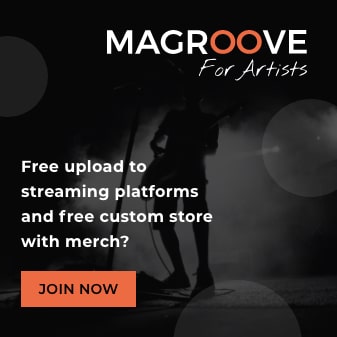close
Free Distribution.
Free Store with
custom merch.
No hidden fees.
JOIN NOW
Not today
Cover Art for DSPs – Never have a rejected cover art again
June 16, 2022 •
4 min read
Have you ever released a single and struggled with the cover art? If so, it's likely that you've noticed how difficult it is to translate your music into a visual art piece. But don't worry, this isn't a hard process once you know the following steps. To guide you in the process of directing and building your album art, please read this carefully. You'll see that after creating some artwork for your songs, the process will become easy and fun.
Artistic concept
There are a few things to decide before producing and creating your art. Starting with a good concept of the work will make it easier to make further aesthetic decisions, like choosing references. Notice that to develop an artistc concept you must take into consideration both your project’s identity and your audience’s . After all, the goal of any launch is to reach people.
But who are these people? What is the target audience and what are the ideal “personas” you are looking to reach?
Answering these questions helps you find who to talk to, and soon you'll find symbols, colors and fonts that speak to the intended audience. This is what we call Artist Branding. Never forget, your primary focus on the entire launch should be communicating with the people that the project was designed for.
Once you understand who you're talking to, you need to adapt the cover art to the image you want to convey with your music. The choice of graphic elements, colors, fonts, effects, all of this must be in line with what you want to say to your audience.
Formats
Each streaming platform requires its own publication format, but a few things can be done to make this adaptation easier.
In general, we use the perfect square (1:1) format. This is a tradition from CDs and Vinyls. As we know, it is always better to decrease the size of an image than to increase it (to maintain quality). We recommend a basic format of 3000 x 3000 pixels, with 300 DPIs, in JPEG or PNG and with colors in RGB.
With this format, it is possible to make adaptations for any of the platforms. But we'll talk briefly about the characteristics of the cover arts for each of them.
- 1600 x 1600 pixels
- Maximum size: 4MB
- Supports JPEG, PNG and TIFF
- Color Mode: sRGB
ITunes
- 3000 x 3000 pixels
- Recommended 300 DPI (minimum 72 DPI)
- Supports JPEG, PNG, TIFF and GIF
- Color mode: RGB (highest quality required
Amazon on Demand
- 1600 x 1600 pixels
- Maximum size 10MB
- Accepts JPEG or PNG
- Color mode: CMIK (RGB works, but with some issues)
SoundCloud
- 800 x 800 pixels
- Maximum size: 2MB
- 300 DPI
- JPEG and PNG
Fonts
If you choose to include text in your cover art, it's important to put effort into picking the right font. Choosing a good font says as much about your music as putting together a good cover image. In the same way, you should also select to tell something to your target audience. But there are some tips we can address to make this choice more effective.
If your text is the name of the song, the text that will come in the cover art must be exactly the same everywhere you insert it. All the letters must be there (and written in the same way) .
If you want your text to be read clearly, choose a large sized font because it'll be minimized in several different ways. And save words. The less text you put, the more effective it will be.
Also, it's important to select fonts that are approved for commercial use. They should not be very common fonts, used in everyday life. For this, use sites like: Google Fonts, 1001 Free Fonts or FontSpace.
And, finally, the choice of color that you make in the text must be based on the color palette you selected when building the cover artwork. This is the “glue” that joins the image to the text and maintains a concise look. Another good option is to select neutral colors such as white and black. Test several options and let your aesthetic sense reign in this choice.
Editing tools
And now, are you ready to start editing? The step-by-step is very simple.
- Start by selecting the images you're going to edit. You can use images that can be freely distributed on sites like Unsplash or Pixabay or images you've shot and created yourself. (Don't make use of any images with brands from others, you could be sued for that.)
- To edit your image, you need to choose a program that is compatible with your skills, your goals and the time you have to build what you want.
- Just to crop images, sites like Ezgif or Iloveimg are enough.
- To elaborate a little more, with ready-made templates, we can use the famous Canva.
- If you already know how to edit images and want a professional finish, you can opt for editing in programs like Photoshop (paid) and GIMP (free).
- After that, place the text with the chosen font.
- Now, you must save the art in the right format for each platform the music is distributed to.
After this simple four-step walkthrough, we're sure you'll produce beautiful cover art for your songs. And whenever you need it, remember that you can spend a few moments saving musical art references of songs and artists you like that have to do with your message, your audience and your music. Market research always helps to break creative blocks. And Magroove is always ready to help you release your music with the fullest potential it deserves.



